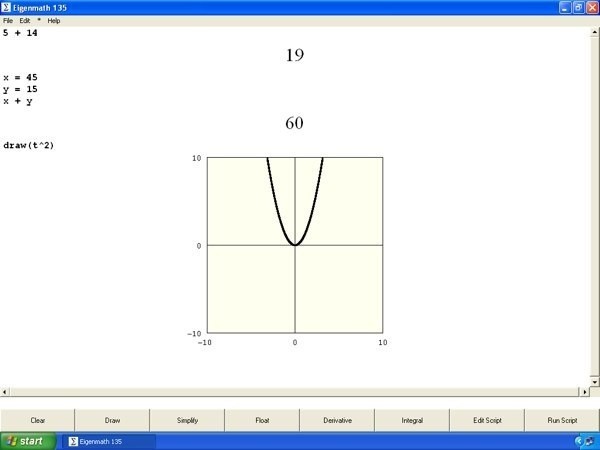


The download short link is the same and it points to the same long URL - only the binary that's there for download is different. Also, read the disclaimer that appears when you press F6 when running the add-in.īeta 2 is out, fixing the memory leaks that happened with some calculations (most noticeable with defint, integral and derivative). Make sure to read the "known issues" above. Right now my development environment is a mess, worse than those parentheses. Yeah, that mix is right and I even put parentheses for you to parse better. ((libm and libc) hacked together from (AHelper's fork of libfxcg)) (((Casio's library for the fx9860) with modifications by Simon) converted to GCC format) Right now the build process is quite hackish, it needs
EIGENMATH FRAC CODE
The add-in is licensed under the GNU GPL v2 and source code will appear on my GitHub soon. Please let us know if you find any more wrong results. I have done tests and couldn't find other problems when factorizing. The Linux build of Eigenmath, which was built from the same source code that this port was based on, correctly returns x^2+1 when factorizing. System errors should never occur, though.įactorizing x^2+1 returns (x+1)(x-1) which is clearly wrong. If you start getting memory/malloc-related errors, exit the add-in (open another) then open Eigenmath again. Memory leaks from Beta 1 seem to have been mostly fixed in Beta 2. The ! for factorials can be inserted with the store (→) key. Anyway, for that kind of math, you can use Casio's Run-MatĪlso, the keyboard keys are linked to Eigenmath functions and symbols as much as I could. Floating point numbers are also supported, even though the precision could be better. Unlike diameter's port of Eigenmath to the fx9860, in this port big numbers are supported and the results are right for 99% of the symbolic calculations. Help for each function may be included in the future. This port of Eigenmath also includes a function catalog. Matrices small enough to fit in the screen are also displayed in a more natural way. When the natural display output is too large to fit in a single line, the equivalent to Casio's "Line" display mode is used, meaning natural display is disabled. And from on now, Eigenmath is available for the Prizm, too!Īs you see, some simple form of natural display is supported. The official website of Eigenmath is currently at and the only version available seems to be distributed through the Mac App Store, however if you look around enough on the internet, you'll find Windows, Linux and even Nintendo DS builds. During the past two weeks, I have been working on porting the Eigenmath math engine to the Casio Prizm.


 0 kommentar(er)
0 kommentar(er)
